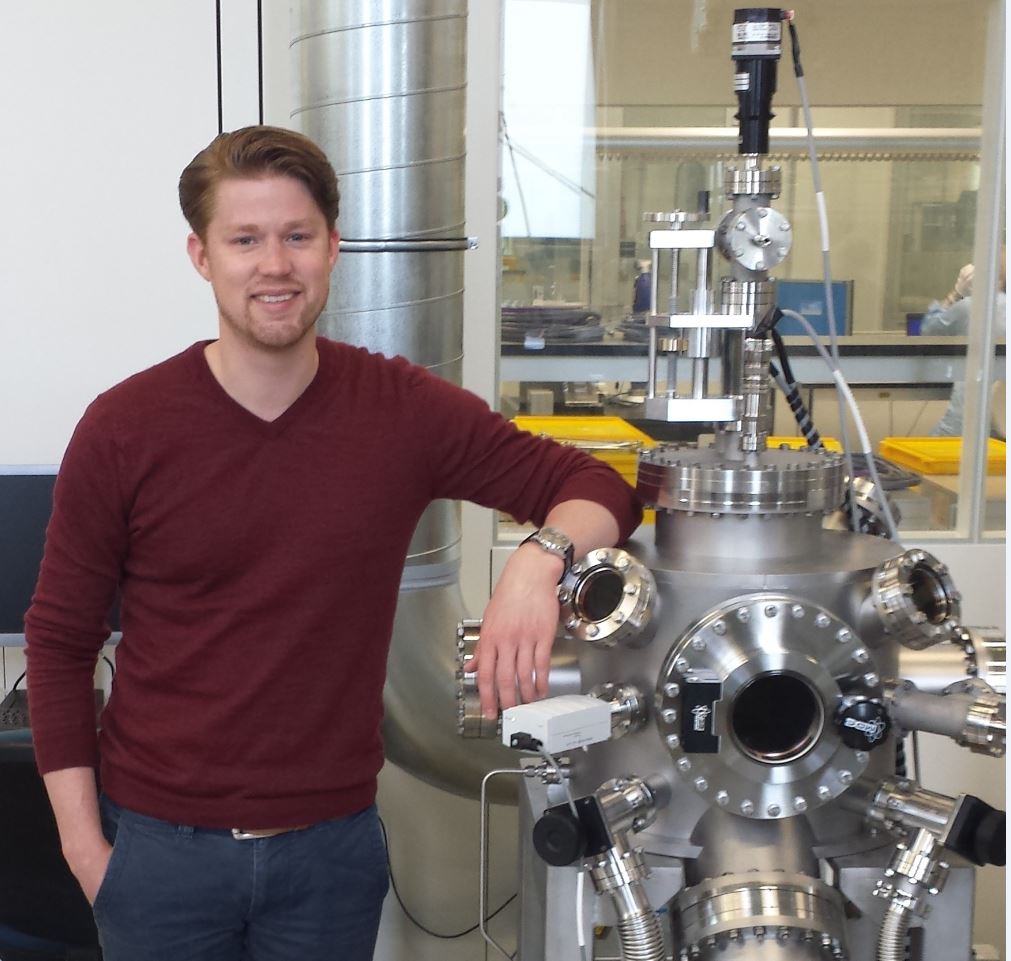Stoichiometry control in oxide thin films by pulsed laser deposition
Rik Groenen is a PhD Student in the Inorganic Materials Science Group (IMS).His Supervisor is Guus rijnders from theFaculty of Science and Technology

A general challenge in the synthesis of complex oxide nanostructures and thin films is the control of the stoichiometry and herewith control of thin film properties. Pulsed Laser Deposition (PLD) is widely known for its potential for growing near stoichiometric highly crystalline complex metal oxide thin films. In PLD, target material is ablated using a high intensity pulsed laser to form a plasma plume that expands towards a substrate on which it condenses. Strong interaction occurs between the laser ablated plasma and the background gas introduced in the PLD vacuum chamber setup. This affects the physical and chemical characteristics of the plasma constituents and subsequently grown film composition, structure and therefore film properties. Specifically oxygen plays an important role in these processes, where the oxygen in the grown film, depending on background gas conditions, originates from the target, the background gas and/or substrate. Nonetheless, still limited are detailed studies on plume chemistry and composition in relation to surface growth characteristics and chemistry. Especially required is a focus on the sources and role of oxygen and species oxidation.
In this thesis outlines the investigation on the propagation dynamics and composition of laser ablated SrTiO3 and YBiO3 plasmas with Optical Emission Spectroscopy (OES) and Laser Induced Fluorescence (LIF). Results are related to an investigation of PLD film growth and structural characteristics of thin films of these materials. Generally it is concluded that sticking and mobility of species at the growth surface resulting in a film with specific stoichiometry is strongly related to the oxidation state. This the result of an intricate balance between oxygen from the target material, oxidation of species during the propagation towards the substrate by interactions with the oxygen background gas and oxygen scavenging from the oxide substrate.





